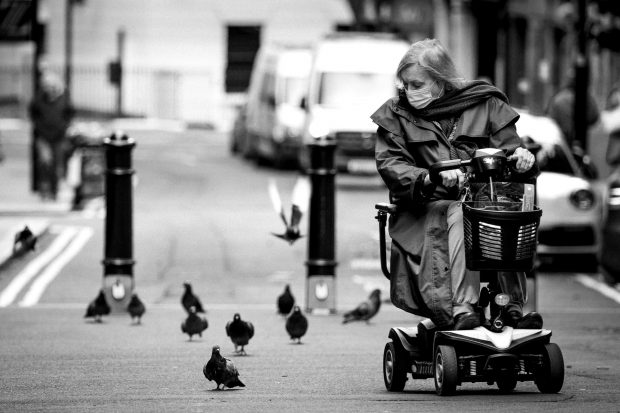There are various mobility aids made to assist the elderly in walking around safely. With age grows weakness, and chances of falling also increase. Falling at an old age can be risky. So, the need for a variety of walking devices developed. Walking aids give support as well as safety to people in need.
A range of mobility aids is available today that cater to all types of walking assistance for anyone. An industry that started with a walking stick is now dealing in walkers, crutches, knee scooters, wheelchairs, and many more. It can be tough to select a walking device among all the options available.
You can visit additional aids mobility for all the details you need to know about walking devices. The article lists some common types of mobility aids available now. You can get a good understanding of the devices and how they can assist the needy.
Sometimes mobility of walking could be temporary due to a total knee replacement. Then it is to take help from these mobility aids, rather than stiffening your bones with a bed rest for months on end.
Types of Walking Assistant Aids
1. Walking Stick / Cane
Canes are the oldest, most familiar, and a usual mobility aid most elderly use. When we reach our seventies, most of us will realize a loss in body balance. A cane could assist us in gaining stability while lowering strain on our legs. It is an easily accessible, handy device that you can keep with you wherever you go.
Usually, the length of the cane is around 36 inches, which is perfect for many. Size and length alteration is possible according to the user’s requirements. Walking sticks provide support to the body by transferring the body weight from the legs to the upper body. Every 1 in 10 elderly use canes to walk and so the benefits of it are well understood.
2. Crutches
Like canes, the principle of crutches is also to transfer the weight from the legs to the upper body. Crutches are used in pairs and are strenuous, clumsy, and more obstructive to use than standard walking sticks.
They are a better temporary walking aid and used after a leg injury. However, for a regular and long-term walking device, we have better options than crutches.
3. Walkers
Walkers are also popularly known as Zimmer frames. These are built with a metal frame and have four legs. Some walkers also have wheels toward the front ends for ease in faster movements. The walkers cover a larger area of the ground, and that’s why they have a better balance over crutches and canes. The user puts weight on both sides of the frame, thus giving more stability and enjoying greater independence.
Although walkers are larger than crutches and canes but are still lighter in weight and foldable. They are tough to maneuver in uneven spaces or places with obstructions. If you require walking aid for outside purposes, then walkers won’t be a preferable option.
4. Rollators
Although zimmer frames are the most common type of walker, the other popular kind is rollators. Rollators also have a frame but also have wheels, handles, and a seat. They also have handbrakes as an extra safety feature.
These walking aids are helpful for the elderly who require more walking assistance and are not ready to use a wheelchair. Rollators are more safe and steady, but their weight, size, and bulkiness cause hindrances for daily use.
5. Knee Scooters
Knee scooters are very similar to rollators. A user can rest one of his knees on the stuffed cushion seat while moving the scooter with another leg.
Knee scooters are a good option for those who have one leg injured. These are also good for users who want to stay active. However, they are good to use but still not recommended for those who have limited moving requirements.
6. Wheelchair
All the other walking aids mentioned above require some effort from the user to move. But, only a wheelchair provides complete mobility, particularly if you have an electric one. A wheelchair is preferable for those who cannot use their legs or cannot walk. It is a perfect walking aid for people with severe disabilities or for those who have to travel long distances.
7. Mobility Scooters
Mobility scooters are more heavy equipment than wheelchairs. Preferably used for outdoor movements, powered by a battery, and have steering control. Mobility scooters can be said to be walking replacement aids rather than walking assistance aids. But undeniably, an ideal option to commute outdoors and over long distances.
Risk Associated with Mobility Aids
Just like any other type of equipment, walking aids also have risks. For instance, excessive use of crutches can cause crutch paralysis. It usually happens because of extra pressure put on the armpit nerves.
Mobility aids, if not used properly, can also cause injuries. If not properly trained to use the walking aids, the elderly are at risk of falling and getting injured. Also, two-thirds of the users buy mobility aids on their own, without consulting any medical professional. It adds to the risk of usage and injuries to the user.
However, walking aid risks can be minimized. You should consult a physiotherapist or a doctor to know the best mobility aid for you and its usage. Based on that, you should make a purchasing decision.
Read More:
Caring for elderly suffering from schizophrenia and related conditions
Key features to consider when choosing a patient portal


